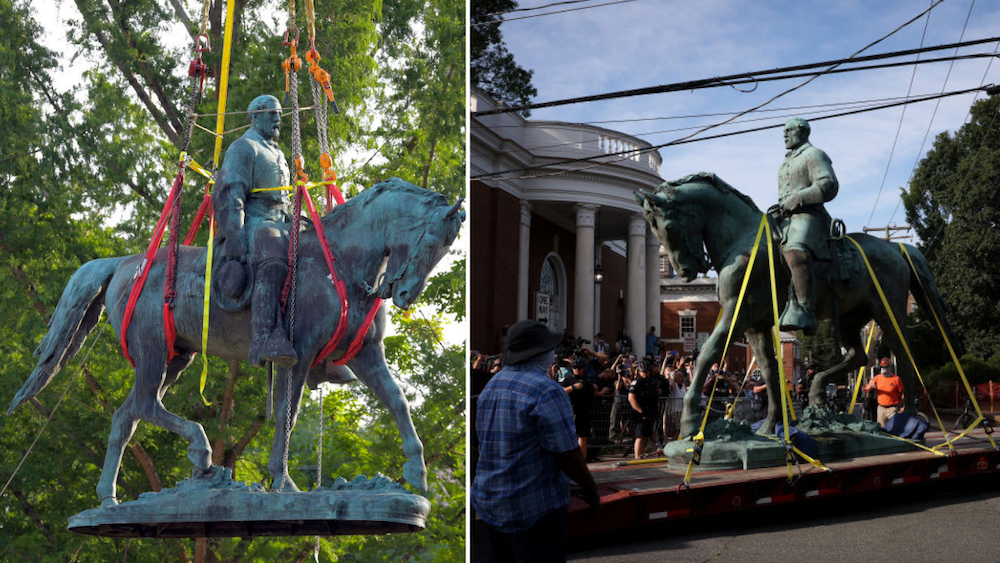The debate surrounding Civil War-era monuments in the United States has been gathering steam over the years. With movements like Black Lives Matter raising issues faced by the African American community, more and more people are pushing for these statues to be removed.
On July 10, Charlottesville, Virginia, removed three statues of those who upheld the country’s racist past, including Confederate General Robert E. Lee. It was a decision met with lots of backlash, but after years of perseverance on the part of city council and residents, the removal went forth.
Previous attempts to remove the statue
The push to remove the statue of Robert E. Lee has been around for years. The most recent call came in 2016, when high school student Zyahna Bryant started a petition. When Charlottesville city council voted to remove the monument, they were quickly slapped with a lawsuit and forced to put the project on hold.
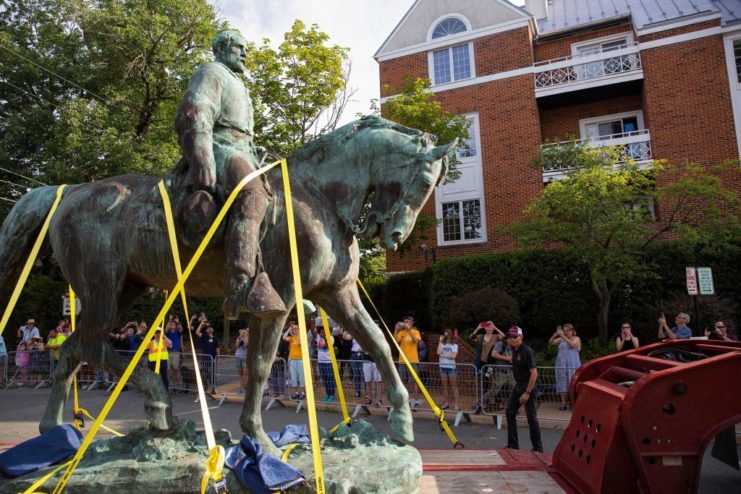
While many supported the removal of the statue, opponents believe doing so is erasing America’s history. They see it and other Confederate-era statues as representing southern culture, as opposed to reminders of the country’s racist past.
The debate over the statue’s removal culminated with the 2017 Unite the Right protest. It was organized by Ku Klux Klansmen, white supremacists and neo-Nazis, and was the largest far-right gathering in a decade. Things came to a head on August 12, 2017, when someone drove into a crowd of counter-protestors, injuring dozens and killing one.
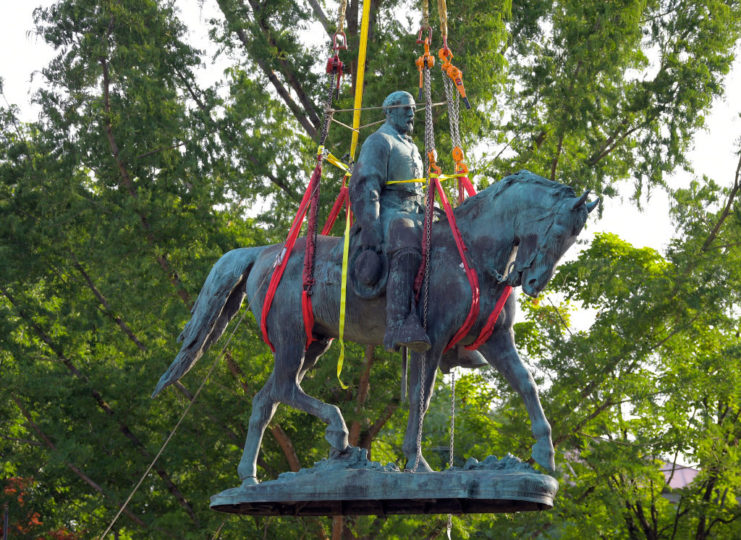
The protest started a national debate on race, which was further exacerbated by then-President Donald Trump claiming the blame rested “on both sides.”
Weeks after the protest, the city council unanimously voted to remove the statue, but were once again blocked. In April 2021, Virginia’s highest state court ruled Charlottesville could remove the statue and that of Confederate General Thomas “Stonewall” Jackson. This overturned the state Circuit Court decision that had upheld the initial lawsuit, and allowed the city council to proceed.
Removal met with celebration
To prepare for the removal on July 10, the city designated no-parking zones and installed protective fencing around the park. There was also a visible police presence, with fencing and heavy trucks blocking off the area to vehicular traffic.
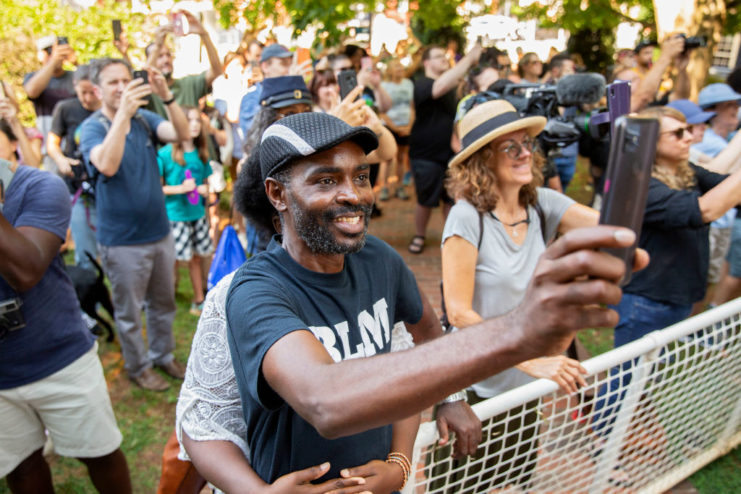
Around 200 residents, Black Lives Matter supporters, and spectators gathered to see the removal, lining the blocks surrounding the park. There were a handful of opponents present at the scene, including a man who heckled Charlottesville Mayor Nikuyah Walker, but there was no visible organized protest.
“To the young people out there, I hope this empowers you to speak up on issues that matter, and to take charge in your own cities and communities,” said Bryant. “No platform for white supremacy. No platform for racism. And no platform for hate.”
The crowd erupted into cheers and applause upon the statue being removed. Many shouted their relief, while others joined in as a hymn began playing from the steps of a nearby church. Take ‘Em Down CVille, a group that campaigned for the statue’s removal, said it was “an important step — and one long past due.”
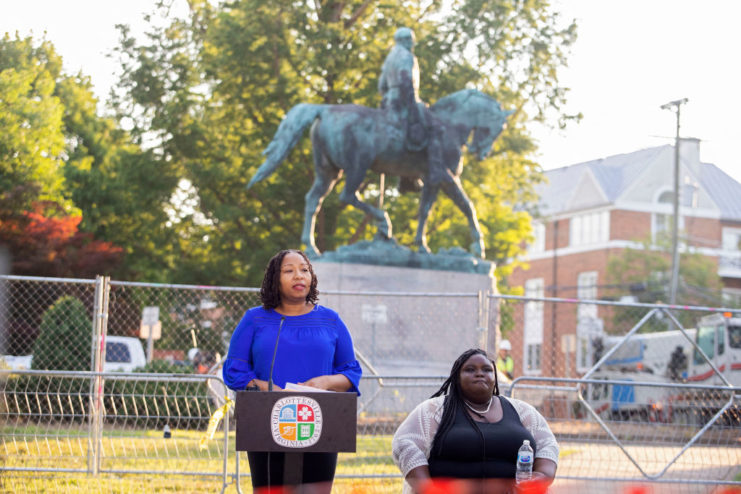
“Taking down this statue is one small step closer to the goal of helping Charlottesville, Virginia, and America, grapple with the sin of being willing to destroy Black people for economic gain,” said Walker to those who were present.
Other statues removed
After its removal, the crowd and workers traveled two blocks to another park, where the statue of Stonewall Jackson stood. It took longer to remove than the Lee statue, but instead of diminishing, the crowd only grew. It took approximately one hour for the crane to lift the statue and place it on the truck bed, after which it was driven away.
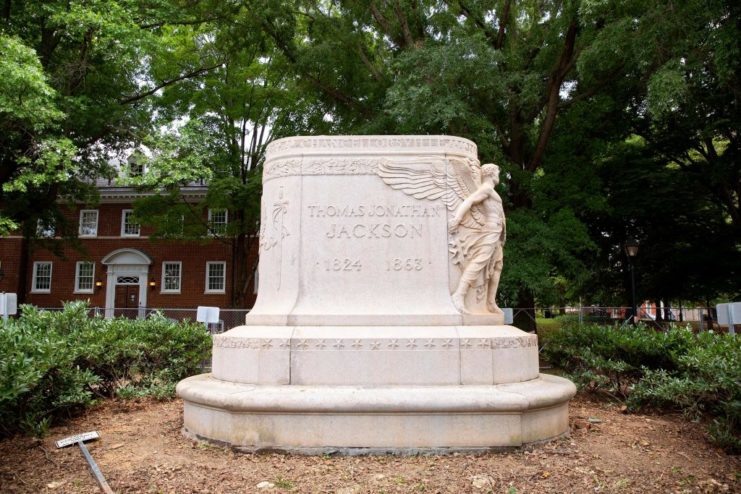
A statue depicting Sacagawea and explorers Lewis and Clark was also removed. The statue, which was given to the city in 1919, had long since been criticized by those who felt it portrayed Sacagawea as subservient and weak.
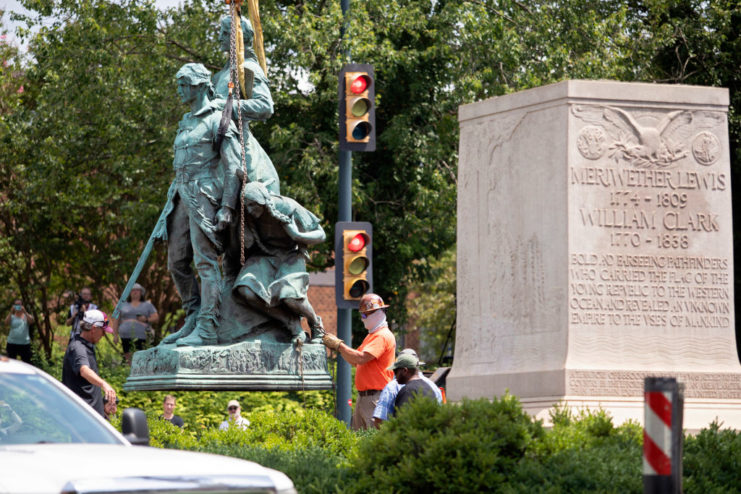
More from us: Why Are There So Many US Monuments To WWII Collaborators?
The statues have been transported to a secure spot, where they’ll remain until the city council decides their next steps. As for the parks, local officials say they plan to redesign them “in a way that promotes healing and that tells a more complete history of Charlottesville.”
